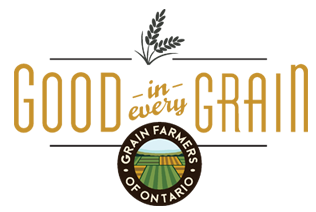Crop rotation: switch it up!

This time of year, you may start to recognize the different crops springing up in farmers’ fields. You may also have noticed that Ontario farmers are growing something different in the same fields you drive past each year. A question we often get is why a farmer may decide to plant different grains from one year to the next on the same plot of land. There are many reasons to plant different grains, such as soil type, economic prospects, and weather.
However, that is not the full story. Even in years with similar weather conditions, a farmer might choose to alternate what grains are in a field. So why else would they be changing what they plant?
One reason a farmer may choose to plant a different crop is to follow their crop rotation. Crop rotation is an agricultural practice where farmers plan to grow different grains in their fields each year, i.e. not always planting the same grain into the same field every single year.

Why do farmers use crop rotation?
There are lots of benefits to switching crops year-to-year! By rotating what they plant, farmers can manage threats such as diseases or insects in their fields. Changing the type of grain grown in a field can disrupt the life cycle of pests and help reduce their numbers, such as in the case of corn rootworm, whose larvae require corn roots to survive. By alternating between corn and other crops, rootworm populations can be lowered, meaning the next time corn is planted, there will be fewer insects threatening it.
Another reason that a farmer may choose to rotate their grain crops each year is nutrient management. To stay healthy, grains need a variety of different nutrients from the soil to grow. By planting a different grain each year, farmers can ensure that their soil remains healthy with the right amount of nutrients available. When growing the same grain in the same field year after year, there is a chance that the soil can become unhealthy.
Crop rotations are one among many different practices used to preserve the soil which we rely on to grow healthy food.

What does crop rotation look like?
Not all crop rotation cycles are alike. No two farms are the same, so each farmer will make decisions based on what works best for their farm and their fields. Some farmers may choose to have a three-year crop rotation, such as corn-soybean-wheat. This means they grow corn in their field in year one, soybeans in year two, and in year three they grow wheat. Others may choose longer cycles or alternate with other crops depending on their goals. These goals and cycles can even vary from one field to another, meaning not every part of the farm will be on the same rotation.
When rotating crops, a grain farmer may include other crops, like canola, vegetables, alfalfa, or edible beans. Crop rotations can even be combined with cover crops to help support soil health further.
Next time you are driving by a farm and wondering why a field looks different this year compared to last, consider crop rotation and all the other practices farmers do to keep the soil healthy and productive.
Links:
- What’s growing ON in that field?
- How farmers choose what they grow
- Corn rootworm and crop rotation
- Even plants need food
- Soil practices
- Cover crops



